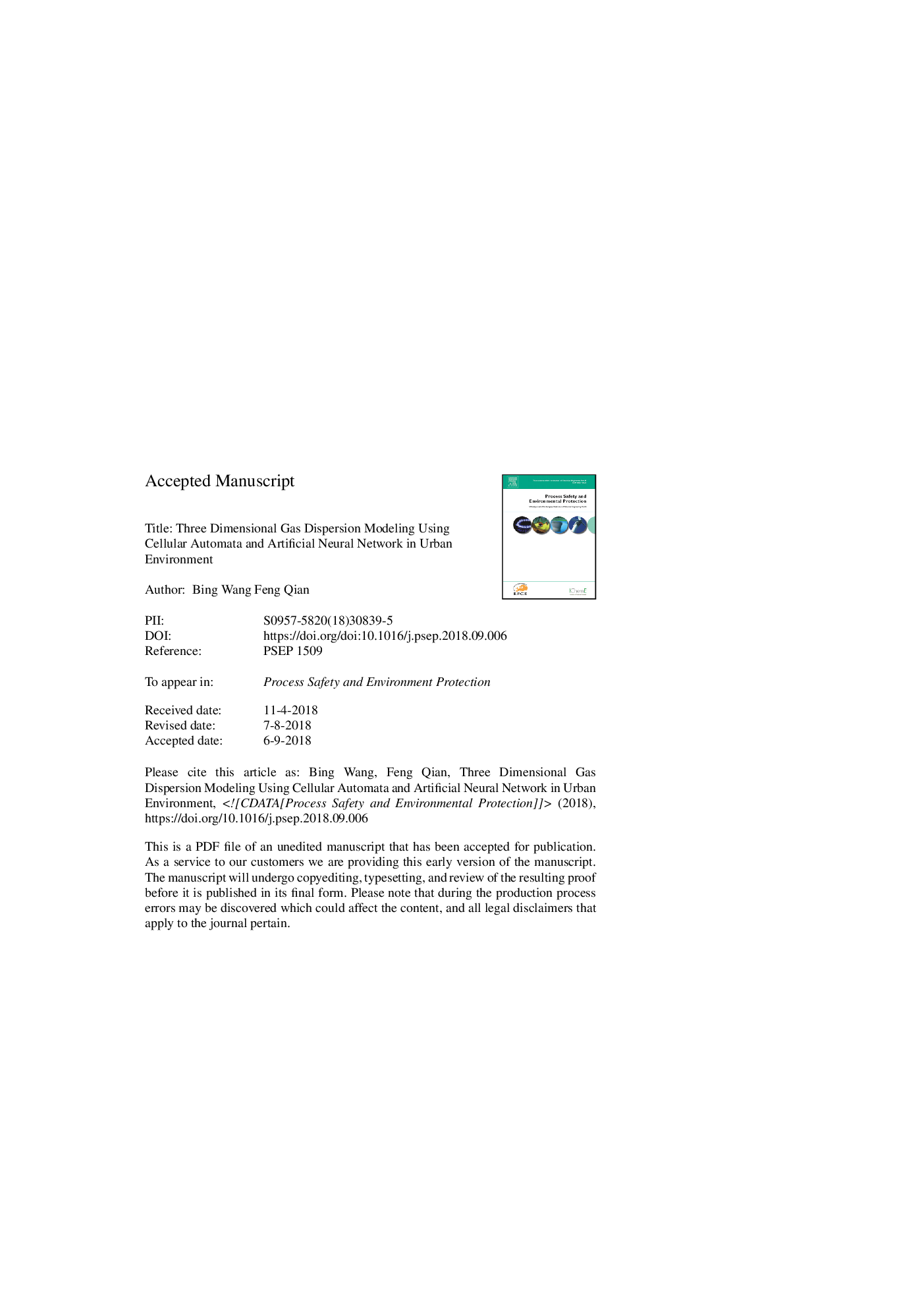| Article ID | Journal | Published Year | Pages | File Type |
|---|---|---|---|---|
| 11030038 | Process Safety and Environmental Protection | 2018 | 33 Pages |
Abstract
The gas dispersion simulation in complex urban environment posts challenges on consequence analysis. Though computational fluid dynamics (CFD) are general approaches to provide building-resolving estimates, the time consuming calculation and complex process of modeling limit their application for emergency response. In this paper, a cellular automata dispersion model is prompted to simulate continuous point release of propane in 3-D domain with ground obstructions. An artificial neural network is employed to calculate the temporal state transition of cellular automata. To provide data for the neural network to train, fire dynamic simulator (FDS) code is adopted to simulate 100 scenarios of propane release from a fixed position in pre-specific domain with different combinations of meteorological conditions and source parameters. A proportion of the simulation results is selected to train the artificial neural network with different transition rules derived from the advection-diffusion equation. The dispersion processes are eventually replicated with the proposed approach on the remaining scenarios that the artificial neural network has never encountered. Provided with detailed meteorological field data, the cellular automata model could calculate the gas dispersion process about 1.5 times faster than FDS. As to the model performance, in the long term evolution, decreases in model accuracy are observed due to the nature of cellular automata in explicit evolution and the unavailability of error compensation methods. The transition rule that takes source terms into consideration outperforms in estimating the concentration distributions.
Related Topics
Physical Sciences and Engineering
Chemical Engineering
Chemical Health and Safety
Authors
Bing Wang, Feng Qian,
